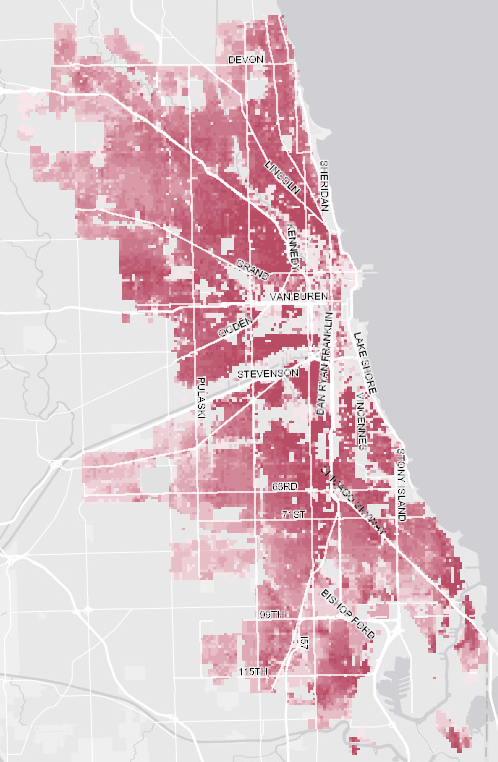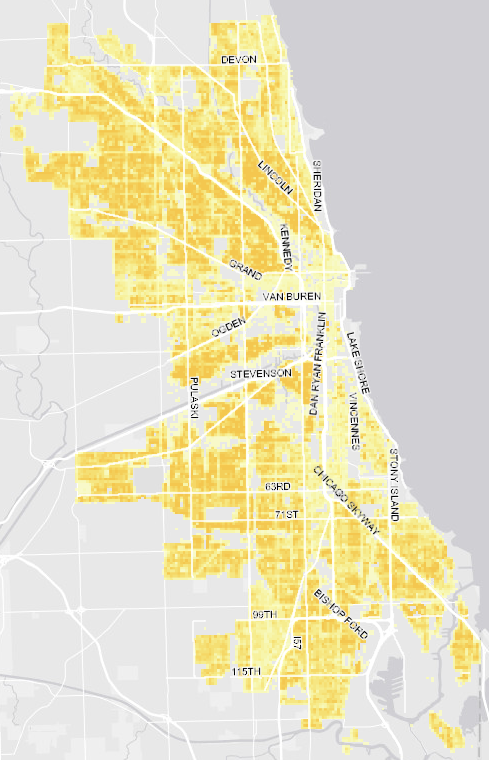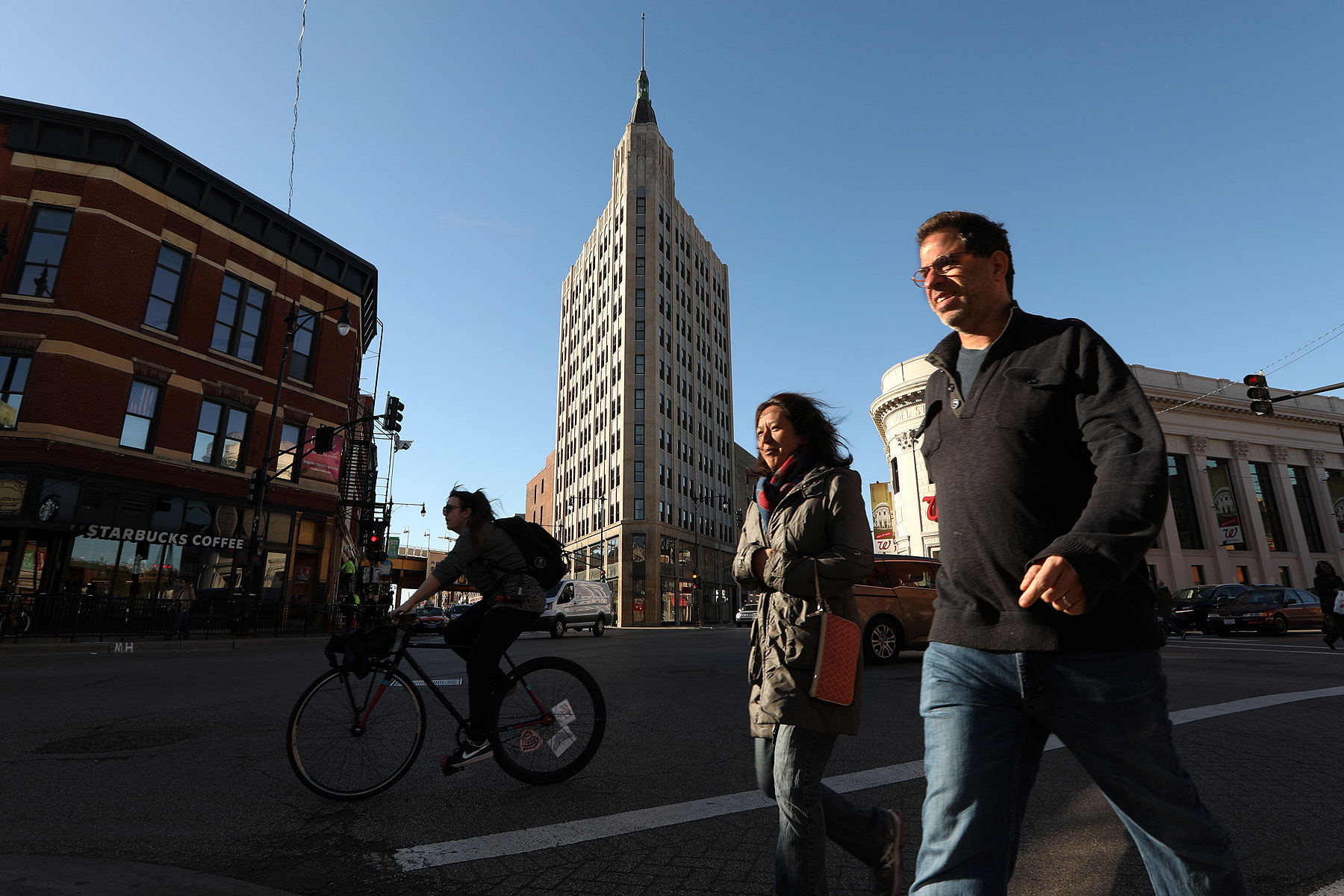What gives a neighborhood "character"? An infinite number of things, mostly in the eye of the beholder. My neighborhood has a bar next to a surveillance shop next to a porn-and-sex-toy store next to a comics-and-games store next to a bartending school next to a quaint little coffee shop that sells jewelry and scented candles. I would be hard-pressed to design a metric to capture that kind of economic diversity, much less qualitatively evaluate it compared to any other block in Chicago, but: clearly, it's character.
Trying to measure character citywide involves stripping down the concept to a handful of very debatable characteristics that less capture character than the kind of urban foundation that might produce what we think of as character. But it's pretty fun to do.
That's what the Atlas of ReUrbanism does. It's a product of the National Trust for Historic Preservation, so their thumb is placed pretty heavily on the preservation of old buildings. But they have reasons for that, and they're not alone in it; they're among many urbanists who place a value on mixed-use, dense (but not too dense) buildings as supporting a well-functioning urban fabric. They've mapped a lot of cities based on these very basic criteria, including Chicago, and the results are pretty interesting.
This is their all-inclusive "Character Score" map, which grades 200-by-200 meter squares on three criteria: the median year built, the diversity of building age, and the granularity of building size. The latter looks at the number of buildings and their size in each square: "Areas of high granularity have large numbers of small buildings on small lots, while areas of low granularity have fewer, bigger buildings occupying large lots, sometimes in the form of superblocks."
So Chicago's core, which has seen a lot of demolition and a lot of new, enormous buildings built over the past few decades, obviously has a low character score. The near-north side and near-northwest side, which has seen both new development and the continued use of old two- and three-flat apartments, have the biggest swaths of high-character areas in the city.
On the South Side, Pilsen, McKinley Park, and Bridgeport stand out as smaller swaths of red.
Looking at the constituent parts, you can see how the criteria add up. The map of median-year built is particularly dramatic—you can see where the city's downtown boom has left it with a relatively new core, with median ages dating back to the 1980s through the 2000s, surrounded by Near North and Near Northwest blocks where the median age sometimes goes back to the 1880s.

The Near North and Near Northwest sides also have a high diversity of building ages….

And granularity, which suggests a high density in terms of the number of buildings in a given square.

Why does it matter? Among other things, there's concern that these high-character neighborhoods are losing the constituent parts of that character. Take this 2016 piece by Chris Hagan for WBEZ, focused on North Center: multi-unit buildings are coming down, single-family houses are going up. Some of this follows the preferences of wealthy families with children who are looking for homes within the boundaries of sought-after schools, but some of it is zoning that encourages tearing down multi-unit buildings: "The Chicago zoning code allows developers to build single-family homes in any residential area , but adding units requires city approval. That increases costs and complexities for any developer wanting to add density."
As Daniel Kay Hertz has written well about, some of these thriving neighborhoods are actually losing rental housing and population, due in part to zoning regulations:
Since replacing a couple two-flats with a courtyard building is now illegal, developers make money by tearing down an old two-flat and building a luxury two-flat in its place. Or they build a mansion, and the neighborhood actually loses a housing unit. As a result, as a neighborhood becomes more attractive, the city encourages fewer people to live there.
And that’s how we arrived at the bizarro-world reality that Lincoln Park actually lost roughly the same number of housing units as Englewood between 2000 and 2012.
In a related report, the Trust's Preservation Green Lab took a deeper dive into the character of three cities—Seattle, San Francisco, and Washington, D.C.—and the more direct correlation between dense, mixed-use, age-diverse buildings and socioeconomic indicators. Their conclusions are what you might conclude from the broad patterns of the Chicago maps: high job and business density, more new and non-chain businesses, diversity within the price of rent, high density of general human activity. Something about it seems to work—but it's hard to replicate when it's gone.




